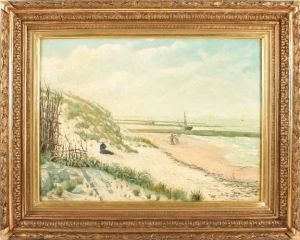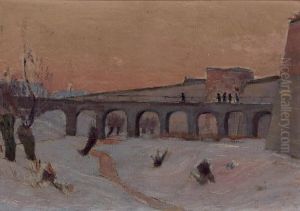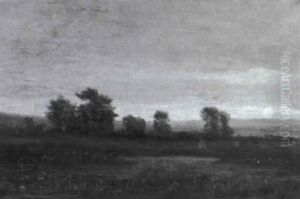Julien Adolphe Dejardin Paintings
Julien Adolphe Désiré Dejardin, born in 1824 in France, was an artist whose contributions to the 19th-century art scene, while not extensively documented in popular art history, reflect the nuanced shifts in European art from the Romantic to the Realist movements. Dejardin's work, primarily focused on painting, showcases a dedication to capturing the essence of his subjects with a realism that was beginning to be celebrated during his lifetime. His life spanned a period of significant transformation in the arts, witnessing the waning of Neoclassicism, the rise and fall of Romanticism, and the dawn of Realism and Impressionism.
Dejardin, though not as widely recognized as his contemporaries like Eugène Delacroix or Gustave Courbet, managed to carve out a niche for himself within the French art scene. His education and early career were rooted in the traditional academies, which emphasized classical approaches to art. However, as his style evolved, it became evident that Dejardin was part of the broader movement among artists who were beginning to challenge these conventions. His paintings often focused on the natural world and everyday life, subjects that became central to the Realist movement which sought to depict ordinary existence without idealization.
Throughout his career, Dejardin exhibited his works in various salons and galleries, earning accolades for his detailed and vibrant portrayals of contemporary life. Despite the lack of extensive records of his exhibitions, it is known that his work resonated with a segment of the art-buying public, which was increasingly interested in Realist representations. Dejardin's legacy, though not as prominent as some of his peers, remains significant for art historians who study the period's transition in artistic styles and the emergence of Realism.
Dejardin died in 1900, leaving behind a body of work that captures a transformative period in art history. His paintings, while not as prolifically reproduced or celebrated as those of some contemporaries, provide insightful glimpses into the changing tastes and sensibilities of 19th-century France. Through his art, Julien Adolphe Désiré Dejardin contributed to the rich tapestry of European art history, embodying the shift from the idealized forms of earlier movements to a more grounded, realistic portrayal of the world.





